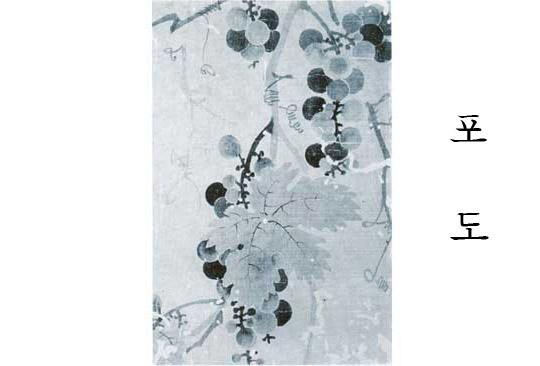Sin Saimdang, a representative Korean paintress, and her remains
Sin Saimdang was the representative paintress of the feudal Joson dynasty.
From the childhood, she was good at composition, painting, embroidery, needlework and the like.
Especially she was very good at painting. When she was young, she drew the landscape and grapes in imitation of An Kyon’s paintings, which caught the admiration of the neighborhood. She depicted everything that could be seen in the nature like birds, fish, flowers, grasses, butterflies, bees and grasshoppers.
Feudal sexism which prevailed in those days even to control the women’s movement limited her drawing topics to those that could be seen in and around of her house garden. However, her acute observation and vivid description on the matters and phenomena that no one had interest in was rather striking and formed her own painting style.
Her typical paintings are “Mandarin-fish”,“Eggplants”, and “Grapes”.
“Autumn Grass” was so well known even to the Royal court to be used as a design for embroidery and original pattern for ceramic-making.
And “Mandarin-fish” wasof great value with the calligraphy of her son, Ri Yi under the nom de plume of Ryul Gok.
At the “Eggplants”, two eggplants, of which the fruits were very tender and oval-shaped, were vividly described together with a bee flying onto a china pink in full bloom and a grasshopper crawling under the eggplants. All of these elements in the painting created a vivid and lively atmosphere.
This painting shows her professional eye and creative attitude to find beauties in everything around, and her distinctive feminine emotions and feelings.
She was also well versed in the drawings of grasses and insects. It is told that when she dried her paintings in the sun, the hens pecked the grasses and insects in the paintings. This story makes clear her remarkable talents together with the anecdote of Sol Go who had painted the pine trees at the Hwangryong Temple.
Enlarging the subjects in the painting and drawing the vivid and colored pictures in contrast to the black-and-white paintings that reflected the taste of feudal ruling circles, Sin Saimdang contributed to the development of the realistic Korean painting.
In addition, she was well-known for the good education of her sons and daughters, and as a poet who admired the nature’s beauty and the women’s fidelity as well.
It was none other than a pride that a talented paintress and poetess like Sin Saimdang was produced in that times when the women were forced by the feudal ethics and morals.
